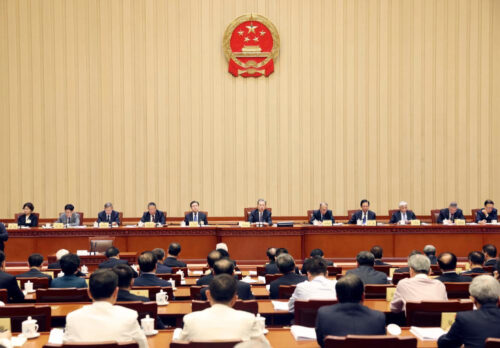The Beijing stimulus is coming: How to get in front
COVID lockdowns and war in Ukraine mean that tough economic times are coming. In China, that means a huge government stimulus. Gerard DeBenedetto explains how investors can take advantage.

While the headline GDP number out of Beijing this week was not terrible, other economic data was bad and has yet to reflect the most severe lockdowns. Retail sales and unemployment are the worst since the emergence of COVID-19 in Wuhan in early 2020, and industrial production and investment in real estate slowed during the first quarter.
The first quarter GDP showed 4.8% growth, but no sober economist or politician expects China to reach the annual target of 5.5% without a heavy dollop of stimulus.
Given the importance of the Party meetings later this year, where Xí Jìnpíng 习近平 is expected to be given another five-year term, Beijing will most certainly prioritize that headline GDP number.
GDP is the sum of consumption, investment, government spending, plus exports minus imports. In the next few months, there will be downward pressure on each of these variables. Consumers in lockdown cannot or are reticent to spend, and the same applies to investment from corporations. The number of cargo ships waiting in Hangzhou Bay to dock at the Shanghai port has probably peaked, but Shanghai exports more than it imports, which puts additional pressure on GDP, as it will take time to sort through the queue.
Government spending is the only input that can deliver short-term impact at scale.
For almost two years, the planned growth model articulated by Beijing has been to move away from export-led manufacturing toward domestic consumption. This policy, widely known as dual circulation, explains some of the disruption across technology, education, and real estate over the past two years. It is also an attempt to prepare for a future where domestic firms serve the mainland before attempting forays abroad. Official GDP growth was already lowered to reflect this new model of perceived higher-quality growth; therefore, further haircuts will be viewed as economic failure.
What does stimulus look like under this new growth model? Filling even small percentage shortfalls in an $18 trillion economy means big projects, executed quickly. This starts with the biggest banks, which will certainly lend but also invest in local government bonds and facilitate foreign exchange transactions. The People’s Bank of China (a.k.a. PBoC, the country’s central bank) has already lowered reserve requirements and issued a “special payment” of 1 trillion yuan ($153.79 billion) of PBoC profits to be applied to tax rebates, employment, and other stimulative activities. This stimulus should fall to the industries that are 1) aligned with the new growth model, 2) protected from foreign investment, and 3) dominated by state-owned enterprises. These industries are banks, industrials, materials, mining, and metals.
The top five holdings in each of these are:
Banks
601166 Industrial Bank
600036 China Merchants Bank Co Ltd
601398 Industrial and Commercial Bank of China Ltd
000001 Ping An Bank Co., Ltd.
002142 Bank of Ningbo Co Ltd
Mining and Metals
601899 Zijin Mining Group Co Ltd
002460 Ganfeng Lithium Co Ltd
603799 Zhejiang Huayou Cobalt Co., Ltd.
600111 China Northern Rare Earth (Group) High-Tech Co., Ltd
002466 Tianqi Lithium Industries, Inc.
Materials
601899 Zijin Mining Group Co Ltd
600309 Wanhua Chemical Group Co., Ltd.
600585 Anhui Conch Cement Co Ltd
002460 Ganfeng Lithium Co Ltd
603799 Zhejiang Huayou Cobalt Co., Ltd.
Industrials
300750 Contemporary Amperex Technology Co., Limited
601012 Longi Green Energy Technology Co., Ltd
601668 China State Construction Engineering Co Ltd
600438 Tongwei Co. Ltd
600031 Sany Heavy Industry Co. Ltd
There is no single way to purchase these names in a basket, but Hong Kong Stock Connect is the most liquid and logical.
Finally, this view is temporary, perhaps valid for the next couple of quarters as COVID lockdowns hopefully wane and the consumer comes back. If that doesn’t happen, don’t be surprised if Beijing leans on infrastructure and property for growth once again.
A-Share Intelligence is a weekly column.






